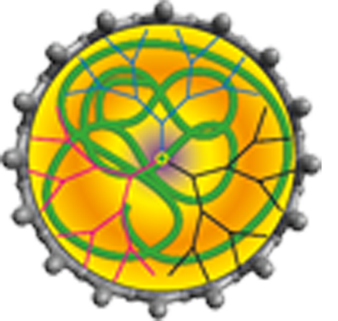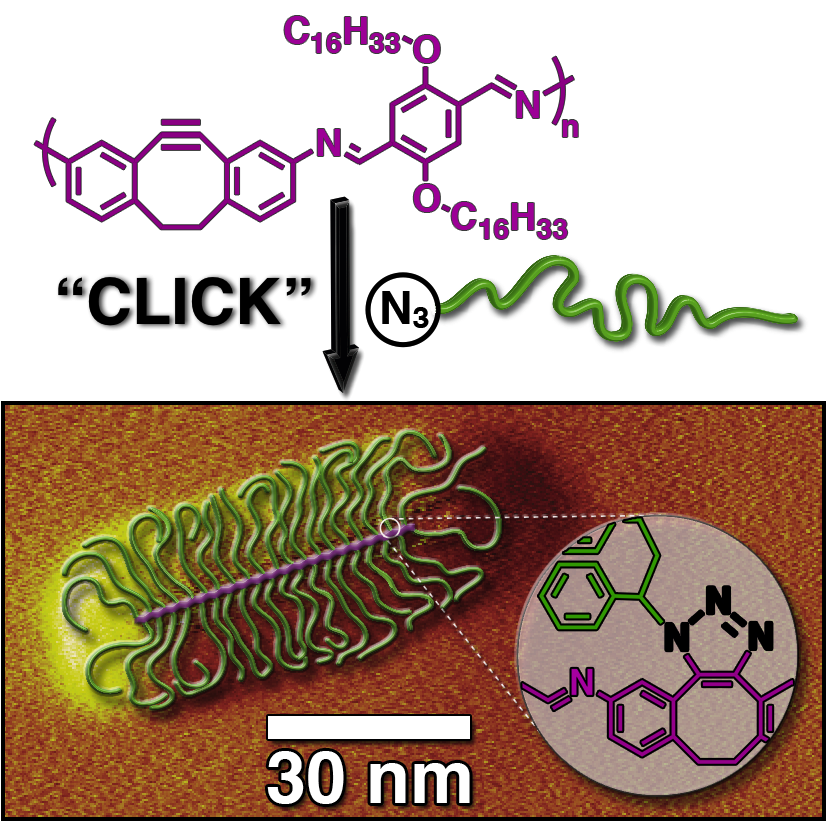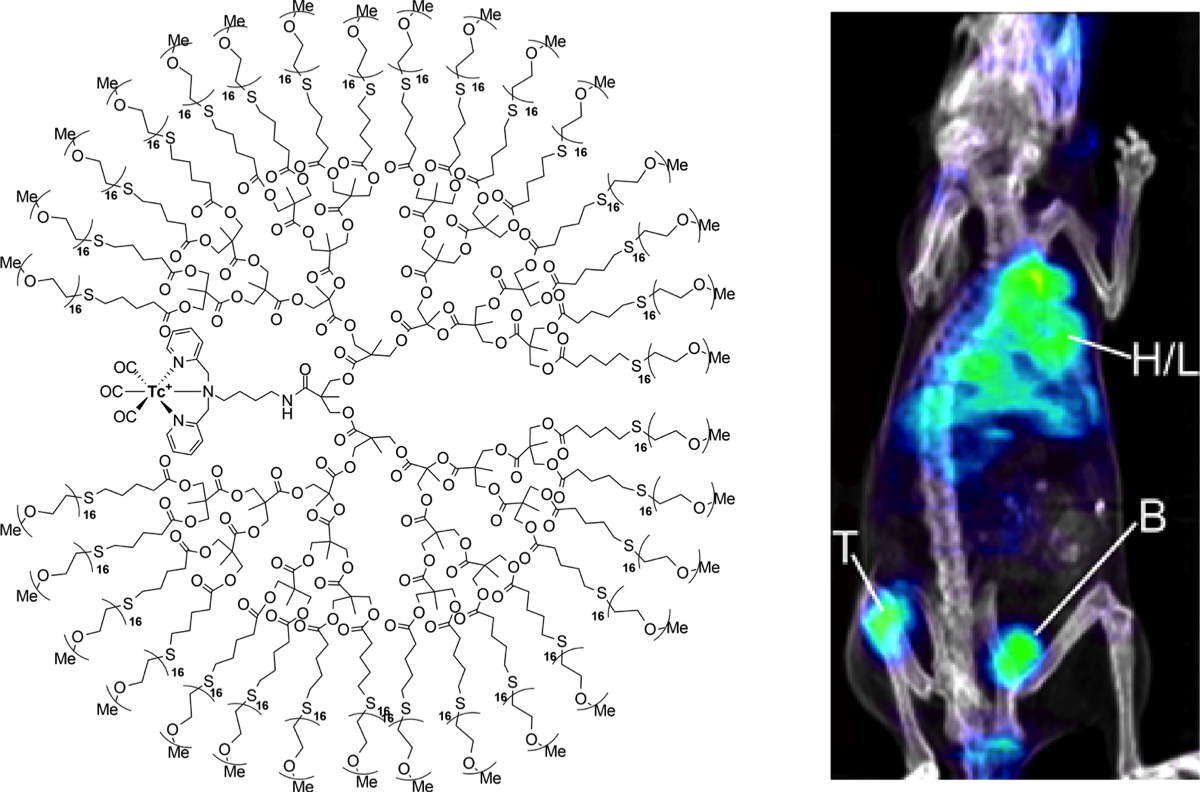Overview
Current research in the Adronov Group focuses on the synthesis of new building blocks for the assembly of novel polymer structures and architectures. While the goal is to develop a fundamental understanding of nanoscale assemblies of polymers, the individual research projects are geared toward specific applications. These applications include next-generation nano electronics, nano-scale sensors, and dendrimer-based therapeutic and diagnostic agents. A significant focus of researchers in the group includes organic synthesis of new and interesting building blocks for the assembly of novel polymers. This synthetic effort is complemented with detailed characterization of the synthesized compounds, and the properties of polymer products. The progression from design to synthesis, characterization, and application of our materials provides well-rounded training to group members, allowing them to develop creativity, competence, and a broad understanding of their field.
Conjugated Polymers and Carbon Nanotube Functionalization
Conjugated polymers have been shown to interact strongly with single-walled carbon nanotubes (SWNTs) via supramolecular π-stacking. This is advantageous because polymer adsorption on the SWNT surface imparts solubility to the complex without adversely affecting the intrinsic properties of the nanotubes. In addition, the polymer structure can be synthetically manipulated to impart functionality and/or reactivity to the overall complex, as well as the ability to differentiate between different nanotube types, such as semiconducting and metallic SWNTs. Recent work in our group has focused on the design of polymers that are uniquely selective toward either semiconducting or metallic SWNTs, which represents an area of active current research (see our review in Chemical Science). We continue to work on the development of new polymer structures, with enhanced selectivity for different SWNT species, that can be prepared and used on large scale.
New Polymer Structures
Post-polymerization functionalization of conjugated polymer backbones is challenging as it is difficult to introduce reactive functionality within a conjugated system. We have recently focused significant attention on the preparation of polymers that incorporate reactive groups within their backbone, allowing the elaboration of conjugated polymer libraries in which all members of the library have the same average length. For example, we prepared a polyimine structure with cyclooctyne-containing repeat units that can undergo strain-promoted cycloaddition chemistry with azides. This allows investigation of structure-property relationships without the need to consider molecular weight differences of the polymers. This has recently proven valuable in evaluating the ability of different polymer structures to disperse carbon nanotubes. We are currently continuing our efforts to develop and take advantage of new polymer structures with latent reactivity along their backbone.
Dendrimer Synthesis
Dendrimers are a class of polymers that are precisely synthesized, monodisperse, and can exhibit a large number of functionalizable end-groups. This multivalency of dendrimers makes them attractive scaffolds for drug delivery applications, as a high loading of pharmacophores can be achieved on each structure. In addition, if the pharmacophore is incorporated within the interior of the dendrimer, the periphery of the macromolecule can be tailored for solubility and specific targeting functions. Our work focuses on the preparation and functionalization of aliphatic polyester dendrimers, which are promising for therapeutic applications because they have previously been shown to be water-soluble, biocompatible, non-toxic, and biodegradable. In collaboration with the group of Prof. J. Valliant and the Centre for Probe Development and Commercialization (CPDC), we have been developing macromolecular, dendrimer-based, radioimaging agents. Using 99mTc as the radionuclide and a bis(pyridyl) amine ligand at the dendrimer core, a series of high-generation aliphatic polyester dendrimers have been prepared and fully characterized. Their well-defined structure, high purity, and single-site radiolabeled structure produced clinically relevant imaging agents that could be evaluated in vivo using single-photon emission computed tomography (SPECT). This work represents early stages in the development of a dendrimer family that can house a therapeutic payload, be targeted to specific disease sites through peripheral modification, and be monitored in real-time upon injection into, perfusion through, and elimination from preclinical models and, ultimately, patients.



